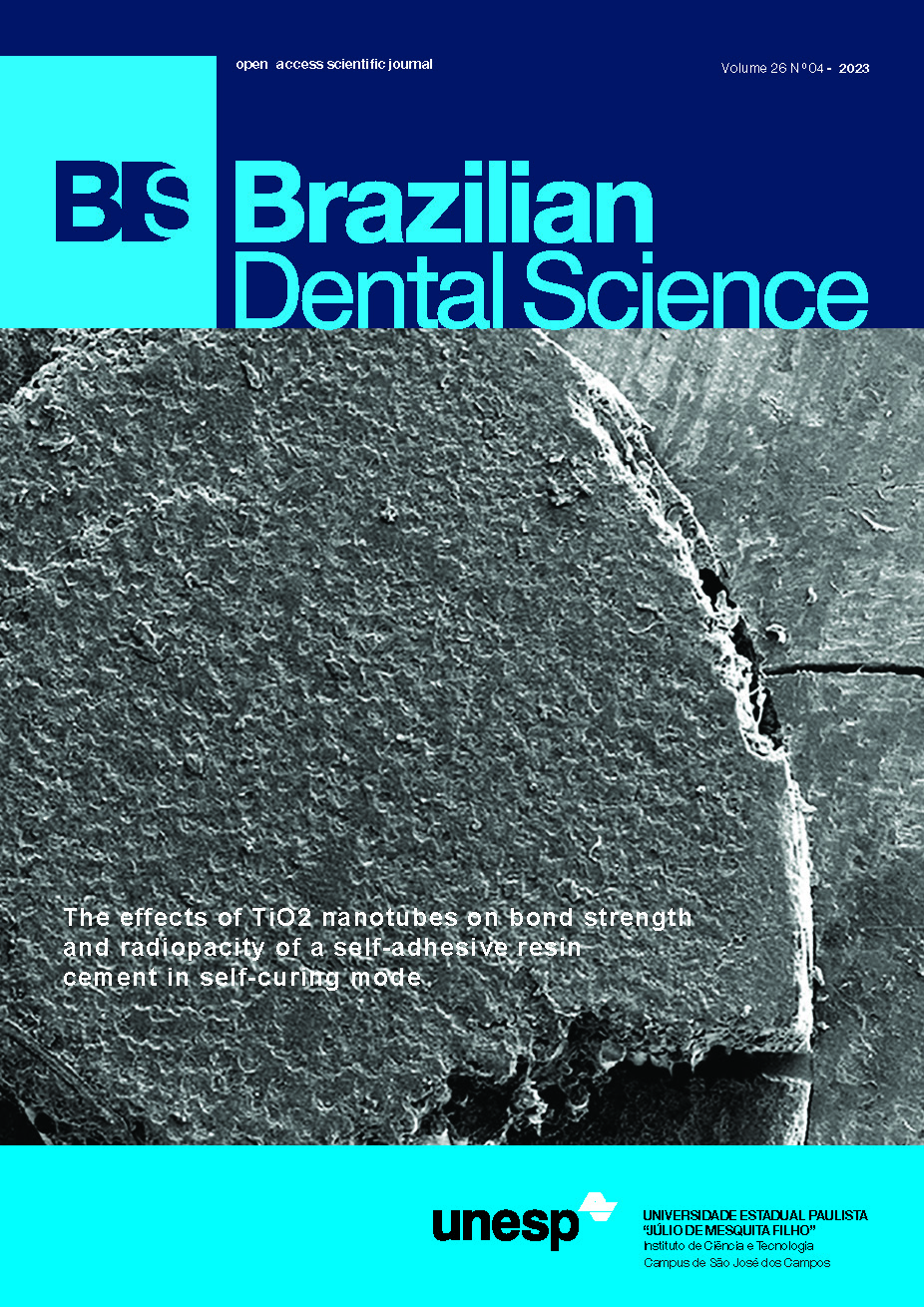Effect of low-level LASER therapy versus CAD/CAM Michigan splint on patients with Temporomandibular Muscle Disorders: a randomized clinical trial
DOI:
https://doi.org/10.4322/bds.2023.e3940Abstract
Objective: This study aimed to evaluate the efficacy and sustainability of using low level LASER therapy and CAD/ CAM Michigan splint on improving the range of mandibular movements, muscle activity and reducing the pain. Material and Methods: 56 female patients were randomly divided into two groups. Group A: Patients received applications of low-level LASER therapy using semiconductor InGaAsp diode LASER type 940 nm with continuous mode of operation, applied for 180 sec per session for 12 sessions. Group B: Patients received Michigan splint of 2 mm thickness constructed on their upper teeth, the splint was 3D digitally printed. Electromyography was used to evaluate muscle activity, visual analogue scale was used to evaluate the pain intensity, ARCUS digma facebow was used to evaluate range of mandibular movements, and maximum mouth opening was taken using a millimeter ruler. They were measured before the beginning of the treatment, and at three and six month follow-up periods. Results: The results revealed that both low-level LASER therapy and Michigan splint reduce the myofascial pain, improved the range of the mandibular movements, and the muscles activity, but the effect of the low-level LASER therapy was more profound and sustainable. After 6 months from the beginning of the treatment, changes in masseter muscle activity (P= 0.001; effect size= 1.757), pain intensity (P= 0.003; effect size= 3), and range of mandibular movement (P= 0.001, effect size= 1.729) differed significantly between the two groups. Conclusions: Low-level LASER therapy had a better and more sustainable effect on reducing the pain intensity and improving the muscle activity as well as the mandibular movement when compared to Michigan splint.
KEYWORDS
Electromyogram; Low level LASER therapy; Michigan splint; Muscle disorders; Myofascial pain; Temporomandibular disorders.
Downloads
Published
How to Cite
Issue
Section
License
Brazilian Dental Science uses the Creative Commons (CC-BY 4.0) license, thus preserving the integrity of articles in an open access environment. The journal allows the author to retain publishing rights without restrictions.
=================




























